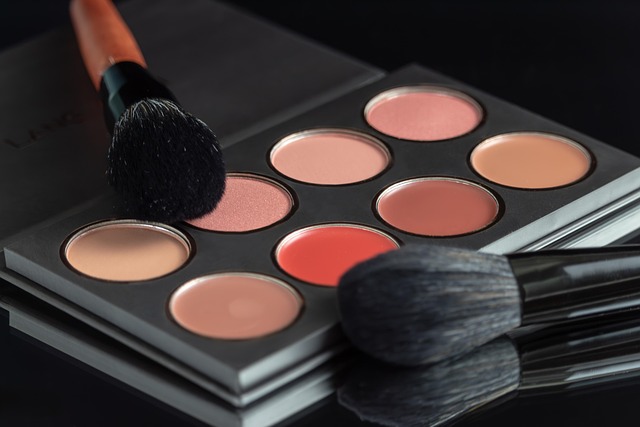Skin tags, or acrochordons, are common growths that can be removed for cosmetic reasons. In Bradford, DIY methods like duct tape or salicylic acid offer non-invasive Tag Removal at home, but require caution. Professional procedures include cryosurgery, surgical excision, and laser treatment, tailored to skin type and preference. After successful removal, proper aftercare is essential, including cleanliness, protection, and hydration for future prevention.
Looking to remove skin tags in Bradford? Our comprehensive guide covers everything you need to know about tag removal. We explore various methods, from at-home remedies to medical procedures, ensuring you make an informed decision. Learn about different types of skin tags and understand their causes. Discover the right treatment option for your needs and find expert aftercare tips to prevent regrowth.
- Understanding Skin Tags: Causes and Types
- Non-Invasive Removal Methods at Home
- Medical Procedures for Tag Elimination
- Choosing the Right Treatment Option
- Aftercare and Prevention Tips
Understanding Skin Tags: Causes and Types
Skin tags, also known as acrochordons, are small, soft skin growths that typically appear on the neck, armpits, and groin area. They can vary in size from a few millimetres to around a centimetre, often resembling little warts or pieces of loose skin. While they are generally harmless, many people choose to have them removed for cosmetic reasons or because they find them irritating.
There are several types of skin tags, with the most common being acral and anomalous. Acral skin tags occur in areas where friction is common, such as the neck or armpits, while anomalous tags can develop anywhere on the body, including areas not typically exposed to friction. Understanding these causes can help individuals take preventive measures, such as wearing loose-fitting clothing to reduce friction in problem areas, thereby potentially reducing the likelihood of developing new skin tags and requiring Tag Removal Bradford procedures.
Non-Invasive Removal Methods at Home
There are several non-invasive removal methods for skin tags that can be attempted at home, offering a convenient and cost-effective alternative to medical procedures. One popular option is using duct tape. This method involves gently pressing a piece of duct tape over the tag and leaving it in place for several days, which eventually leads to the skin tag falling off. It’s important to note that this process should be done with caution to avoid irritation or damage to surrounding skin.
Another at-home approach is using salicylic acid, a common ingredient in acne treatments. By applying a small amount of over-the-counter salicylic acid solution directly to the skin tag, you can help soften and eventually remove it. However, this method may take several weeks or even months of consistent application to see results, and it’s crucial to follow the product instructions carefully to prevent skin irritation. For those in Bradford seeking Tag Removal, these non-invasive methods offer a gentle and home-based solution.
Medical Procedures for Tag Elimination
When considering tag removal Bradford, several medical procedures offer effective solutions. One common approach is cryosurgery, where a liquid nitrogen probe is used to freeze and destroy the skin tags. This method is generally quick, painless, and suitable for many types of tags. Another option is surgical excision, involving a minor procedure where the tag is cut out with a scalpel or scissors under local anaesthesia.
For larger or more complex tags, laser treatment might be recommended. This non-invasive technique uses focused light to burn away the tag, promoting healing and reducing scarring. Each procedure has its advantages and may be chosen based on the size, location, and number of tags, ensuring optimal results for tag removal Bradford.
Choosing the Right Treatment Option
When considering Tag Removal Bradford, it’s crucial to understand that different treatments cater to various skin types and preferences. The right option for one person may not be suitable for another, so assessing your specific situation is key. For example, while some prefer surgical excision for its rapidity, others might opt for cryotherapy due to its non-invasive nature and minimal downtime.
Modern aesthetics offer a range of choices, from topical creams to laser treatments, each with its own set of pros and cons. Consulting a professional esthetician or dermatologist is essential to determine the best course of action based on the size, location, and number of skin tags, ensuring optimal results and patient comfort.
Aftercare and Prevention Tips
After successfully removing skin tags through professional Tag Removal Bradford services, proper aftercare is essential to prevent infection and promote healing. It’s crucial to maintain cleanliness by gently washing the treated area with mild soap and water, patting it dry afterward rather than rubbing. Using a sterile gauze or bandage can protect the spot during recovery, especially when engaging in activities that might irritate it.
To prevent future skin tags, keep the affected region moisturized but avoid applying any products directly on the tag before it’s fully healed. Regular exfoliation and keeping the skin clean can help remove dead skin cells and reduce the chances of new tags forming. Additionally, staying hydrated and maintaining a balanced diet contribute to overall skin health, making it less susceptible to skin tags in the future.
Removing skin tags in Bradford or anywhere else doesn’t have to be a daunting task. By understanding different causes and types, you can choose from various non-invasive home methods or opt for medical procedures. Each treatment has its pros and cons, so it’s crucial to select the right option based on your preferences and severity. Aftercare and prevention tips are also essential for maintaining healthy skin. Remember, consulting a dermatological expert in Bradford can provide personalized advice tailored to your specific needs.
